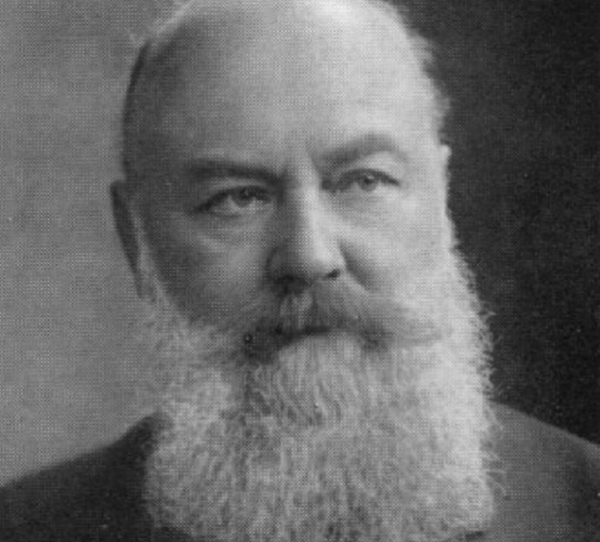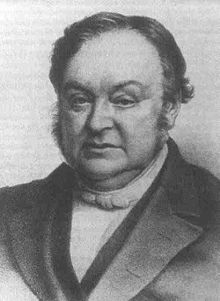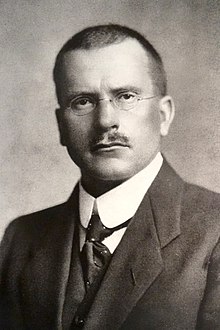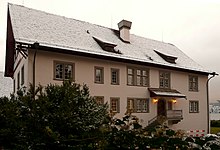40년을 하루 한 끼만 먹으면서 자동차에 의존하지 않고 걸어다닌 사람이 있다면, 아무도 믿으려 하지 않을 것이다. 칠성판이라고 하는 죽음의 널판자에서 자고 하루의 시작과 더불어 그 위에서 사색하고 공부하면서 하루를 살다가 밤이 되면 주어진 하루에 감사하면서 죽음을 맞이하는 것처럼 다시 죽음의 널 위에서 눈을 감는다. 매일같이 그렇게 하루[할우]를 사는 ‘하루살이’의 삶을 산 사람이 있다면, 사람들은 그 사람은 제 정신이 아니라고 생각할 것이다.
류영모의 삶과 연경반(硏經班) 강의
바로 그가 “식사(食事)는 장사(葬事)다”라고 설파하면서 인류의 모든 문제는 식(食)과 색(色)에 달려 있다고 외친 다석(多夕) 류영모(柳永模)(1890〜1981)이다. 그처럼, 그의 주장대로 산다면 21세기 인류가 안고 있는 대부분의 문제는 해결될 수 있다. 그처럼 하루 한 끼니만 먹고 걸어다니면서 살 수는 없다고 하더라도 우리는 그의 정신과 가르침에서 암울한 이 시대를 헤쳐 나갈 삶의 지표를 발견할 수 있다.
다석 류영모, 그는 누구인가?(1) 류영모는 어려서는 서당과 소학교에 다녔다. 17세에는 서울 경신학교에 입학하여 2년 간 수학하였다. 이렇게 그는 서당교육과 신식교육을 아울러 배운 신지식인이었다.
1910년 20세에 남강 이승훈의 초빙을 받고 평북 정주에 있는 오산학교에 교사로 2년 간 봉직한다. 그 후 일본에 유학 가서 동경 물리학교에 입학하여 1년 간 수학하고 귀국한다. 1921년 31세에 정주 오산학교 교장으로 취임하여 1년 간 재직한다.
이때 함석헌과 운명적으로 만나 평생 그의 스승이 된다. 1928년부터 약 35년 간 YMCA에서 성서를 포함한 동서양의 경전을 연구하는 연경반(硏經班) 모임을 지도한다. 1939년 51세의 나이에 깨달음을 얻고 일일일식(一日一食)과 금욕생활을 실천한다.
1955년에 일년 뒤인 1956년 4월 26일에 죽는다는 사망예정일을 선포한다. 일기 『다석일지(多夕日誌)』를 쓰기 시작한다. 1959년 노자 도덕경을 우리말로 완역하고 그밖에도 다른 경전의 중요부분들을 우리말로 옮긴다. 1981년 2월 3일 91세의 나이로 세상을 떠난다. 그의 하루살이의 삶이 3만 3천 2백일을 채운 날이다.
2006년에 출간된 책 『다석강의』(2)는 다석이 1956년 10월 17일부터 1957년 9월 13일까지 약 일년 간 YMCA 연경반(硏經班) 모임에서 한 강의를 속기록에 바탕해서 복원한 강의록이다. 다석 강의의 속기록 전문이 출간되기는 처음이다. 이 강의록을 보고 나는 두 가지 점에서 놀랐다.
먼저 일 년이 채 안 되는 강의의 기록이 천 쪽 가량의 방대한 분량이라는 사실이다. 서양의 저명한 사상가의 두 학기 강의록에서도 이만한 분량을 찾기는 쉽지 않다. 그것을 한국의 무명 양봉가(養蜂家)가 해낸 것이다.
그 다음 그 내용이 그야말로 깊은 사색과 명상, 그리고 엄격한 자기수련에서 갈고 닦아낸 삶의 지혜라는 것에 경탄하지 않을 수 없다. 플라톤의 대화록, 공자의 가르침, 간디의 어록들에 전혀 뒤지지 않는 주옥같은 말씀들에 절로 고개가 숙여지고 가슴이 타오른다. 35년의 연경반 강의에서 일 년 치 강의만이 우리에게 전해지고 있다는 사실이 너무나 아쉽고 안타깝다.
동서양 종교에 대한 통합적 사유의 길
| “이 사람이 『성경』만 먹고 사느냐 하면 그렇지 않습니다. 유교의 경전도 먹고 불교의 경(經)들도 먹습니다. 살림이 구차하니 정식으로 먹지 못하고, 구걸하다시피 여기서도 얻어먹고 저기서도 빌어먹어 왔습니다. 그래서 그리스의 것이나 인도의 것이나 다 먹고 다니는데, 이 사람의 깜냥[消化力]으로 소화시켜 왔습니다. 그렇게 했다고 하여 내 건강이 별로 상한 일은 없습니다. 『성경』을 보나 유교 경전을 보나 불교의 경을 보나 그리스의 지(智)를 보나 종국은 이 ‘몸성히’, ‘맘뇌어’, ‘뜻태우’에서 벗어나지 않습니다.”(3) |
이 말에서도 드러나듯이 류영모는 유교, 불교, 도교 그리고 그리스도교를 아우르는 ‘무엇’인가를 모색하였다. 그리고 그는 이것을 그의 독특한 언어관에 바탕해서 펼쳐나갔다. 그에 의하면, 언어[말]는 하느님의 마루[뜻]이다. 그래서 우리는 언어 속에서 하느님의 뜻을 읽어낼 수 있어야 한다.
류영모는 우리말에 담긴 존재의 소리 또는 하느님의 뜻을 읽어내어 그것을 바탕으로 나름대로의 고유한 인간관, 생명관, 신관을 펼쳐보이려 시도하였다. 따라서 류영모는 우리말로 철학하려 시도한 최초의 한국 사상가인 셈이다.
다석 사상의 뛰어남 가운데 하나는 그 동안 언문, 암글이라고 무시되고 천시받아 온 ‘한글’로서 학문할 수 있고 철학할 수 있음을, 아니 철학해야 함을 보여준 데 있다. 다석은 우리말 속에서 말건네 오고 있는 하느님의 소리를 듣는다고 믿었다. 바로 우리말 속에 우리의 독특한 삶의 방식, 사유방식, 철학이 들어있음을 강조하였다.
말을 보이게 하면 글이고, 글을 들리게 하면 말이다. 말이 글이요, 글이 말이다. 하느님의 뜻을 담는 신기(神器)요 제기(祭器)이다. 하느님의 마루뜻[宗旨]을 나타내자는 말이요, 하느님을 그리는 뜻[思慕]을 나타내자는 글이다.
| “이렇게 몇 자가 분열식을 하면 이 속에 갖출 것 다 갖춘 것 같아요, 말이란 정말 이상한 것입니다. 우리말도 정말 이렇게 되어야 좋은 문학, 좋은 철학이 나오지 지금같이 남에게(외국어) 얻어온 것 가지고는 아무 것도 안 돼요. 글자 한자에 철학개론 한 권이 들어 있고 말 한 마디에 영원한 진리가 숨겨져 있어요.”(4) |
다석은 우주의 영원한 생명줄이 이어 이어 내려와서 지금 여기의 나의 몸에 이어져 있다고 말한다. 그는 그것을 ‘이제긋’이라고 이름한다. 무한한 생명이 이어져 내려와 그 끄트머리가 나에게까지 닿은 것이 ‘이긋’이고, 이제 그것을 지금 여기의 내가 이어받아 이어나가야 할 끄트머리로 삼을 때 ‘제긋’이다. 이렇게 ‘하나’인 우주생명은 ‘이제긋’으로서 나의 몸에까지 이어져 내려왔다. 내가 해야 할 일은 이러한 웋일름[하늘의 뜻]을 따라 하늘로부터 받은 속알[바탈]을 태워 다시 ‘하나’에로 돌아가는 것이다.
“사람이 할 수 있는 일은 한 가지뿐입니다. 머리를 하늘에 두고 다니는 것밖에 없습니다.”(5) “‘우’를 쳐다보면서 올라가는 것만이 거룩하게 되는 길입니다. 이것은 이 사람이 항상 하는 소리입니다.”(6) “이 사람이 알고 있는 것은 늘 하나입니다. ‘하나’만을 가지라는 것입니다. ‘하나’밖에 없습니다. 그 하나가 신입니다. 하늘을 왜 믿습니까? 간단히 ‘하나’를 믿는 것이 옳지 않나요?”(7) “이 사람이 드릴 말씀은 사는 날까지 하느님을 더 알고 더 연구하고 싶고, 덕(德)이라는 것을 더 붙이고 싶다는 것입니다. 내일 죽더라도 ‘덕’을 붙여 보고 싶습니다.”(8)
우리말로 철학한 최초의 사상가
배움과 말의 관계에 대한 다석의 이야기를 들어보자.
| “배운다는 것은 말을 알기 위한 것입니다. 말은 사람과 사람 사이를 이어주어 사귀게 합니다. 물건과 물건 사이를 설명해주고 밝혀주는 것도 또한 말입니다. 말은 ‘너를 사랑한다’거나 ‘미워한다’ 할 때에만 쓰는 것이 아닙니다. 말은 이치상관(理致相關)이라 물건과 물건 사이, 사람과 사람 사이의 이치를 밝혀주는 것입니다.”(9) |
다석은 하느님의 말씀을 알아야 실존을 찾아갈 수 있고 하느님도 찾아갈 수 있다고 말한다. 말씀을 모르고서는 도무지 사람 노릇을 못한다. 말을 모르면 사람을 알지도 못한다. 또 말을 알지 못하면 무엇을 갖고 사는 것인지를 알 수 없다. 도(道)라는 것도 말의 길을 안다는 것이다.
다석에 의하면 사람이 생각하는 것은 신이 있어서 생각하는 것이다. 신과 연락하는 것, 곧 신이 건네주는 것이 생각이다. 신이 건네주지 않으면 생각이란 없다. 생각을 한다면 신과 연락이 되어야 한다.(10) 사람은 하나밖에 없는 말씀을 알아야 한다.
그런데 이 말씀은 사람을 보고 나온다. 거의 들리지 않는 가느다란 소리로 말씀이 나온다. 정말 믿으면 그 사람에게서 말씀이 나온다. 말씀이 나오지 않으면 하느님을 알 수가 없다.
언젠가는 우리가 말씀으로 하느님을 알 수 있을 때가 올 것이다. 생각이 나지 않으면 결단이 난다. 하느님의 얼이 끊어지면 그렇게 된다. 생각하는 데 하느님이 계시고, 생각 없이 지내는 것은 짐승이다.(11)
다석은 우리말에서 하느님의 소리를 들으려고 노력하였다. 그래서 기회가 있을 때마다 학계에서나 일상생활에서 자주 쓰이는 한자말을 우리말로 번역해야 할 필요성을 역설하며 스스로 모범을 보였다.
“별(別) · 의(義) · 친(親) · 정(正)을 우리말로 풀이하면 ‘닳(별) · 옳(의) · 핞(친) · 밣(정)’이 됩니다. 이렇게 하여야 우리말로 문화예술의 사상을 그릴 수 있습니다. 너무 어려워도 안 되고 간단히 뜻을 나타내야겠는데, 그러한 표식이 없고서는 큰 사상을 표현할 수 없습니다. 한문으로 적어 놓으면 설명하여야 하고, 자꾸 설명하다 그만두게 됩니다.”(12) “진 · 선 · 미, 이것도 우리말로는 없습니다. ‘참(眞) · 좋(善) · 곻(美)’으로 나타내면 어떨까 합니다. 이렇게 해놓아야 후세 사람도 그 뜻을 알고 이어서 다시 큰 사상을 담게 되는 것입니다.”(13) |
다석은 자신이 여기서 이렇게 시험 삼아 말하지만 후에 우리나라 철학이 있게 되면 이 말들이 잘 쓰일 것이라고 예언한다.
| “우리 민족에게 철학이 필요하면, 누가 되었건 우리말로 철학 용어를 정하지 않으면 안 될 것입니다. 우리 조상이 있어서 우리 몸이 있는 것같이, 우리가 쓰는 말도 꼭 필요한 자식처럼 필요한 말이 마침내 나와야 할 것입니다. 쓰는 말을 억지로 만들어서는 안 되겠지만 무리가 되더라도 만들어야 할 때는 만들어야 합니다.”(14) |
미주 |
(미주 1) 다석의 생애와 사상에 대한 길잡이 글로는 다음과 같은 책이 있다. 박영호, 『씨알. 다석 류영모의 생애와 사상』, 홍익재, 1985; 『다석 류영모의 생각과 믿음』, 다석사상전집 1, 문화일보사, 1995; 『진리의 사람 다석 류영모』 (전2권), 두레, 2001; 박재순, 『다석 유영모. 동서사상을 아우른 창조적 생명 철학자』, 현암사, 2008.
(미주 2) 류영모, 『다석강의』, 다석학회 엮음, 현암사, 2006, 975.
(미주 3) 류영모, 『다석강의』, 606.
(미주 4) 박영호, 『다석 류영모의 생애와 사상. 하권』, 문화일보 1996, 131/2.
(미주 5) 류영모, 『다석강의』, 607.
(미주 6) 류영모, 『다석강의』, 667.
(미주 7) 류영모, 『다석강의』, 103.
(미주 8) 류영모, 『다석강의』, 110.
(미주 9) 류영모, 『다석강의』, 48/6.
(미주 10) 참조. 류영모, 『다석강의』, 96/7.
(미주 11) 참조. 류영모, 『다석강의』, 100.
(미주 12) 류영모, 『다석강의』, 132.
(미주 13) 류영모, 『다석강의』, 133.
(미주 14) 류영모, 『다석강의』, 678. |
이기상 명예교수(한국외대) saemom@chol.com





























 Wikimedia Commons has media related to
Wikimedia Commons has media related to  Wikiquote has quotations related to:
Wikiquote has quotations related to: 

